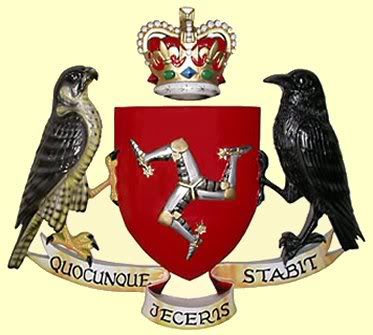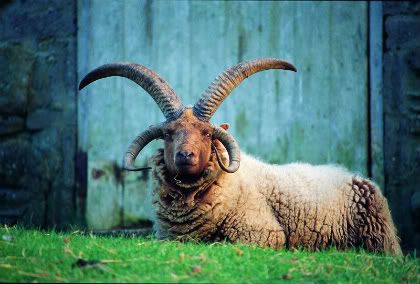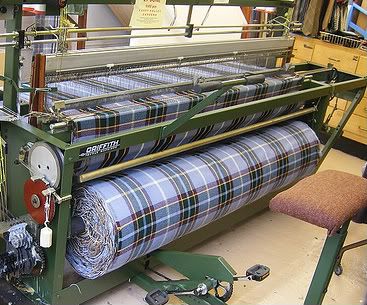 My family is going to The Isle of Mann in a few weeks and we are all getting excited. We are all brushing up on our history, or probably more appropriately, we are learning our history. My last name is Corlett. The Corlett name on the Isle of Mann is the 2nd most popular name. It's like being a Smith or a Johnson here in the United States. I have never met a Corlett that wasn't my relative. There aren't many of us around either and we didn't have any boys in our family - so our family name ends with us, in the United States.
My family is going to The Isle of Mann in a few weeks and we are all getting excited. We are all brushing up on our history, or probably more appropriately, we are learning our history. My last name is Corlett. The Corlett name on the Isle of Mann is the 2nd most popular name. It's like being a Smith or a Johnson here in the United States. I have never met a Corlett that wasn't my relative. There aren't many of us around either and we didn't have any boys in our family - so our family name ends with us, in the United States.For the next few weeks I'll be sprinkling in some IOM (Isle of Mann) tidbits. It'll be like you all are going with me, but a lot less expensive! haha
The Isle of Mann
The distinctive Isle of Man symbol, the Three Legs of Man, was first officially used on the Manx Sword of State in the early fourteenth century. Clad in armour and bearing spurs, the legs run in the clock-wise direction and as a testament to the islanders' independence and resilience, bears the Latin motto 'Quocunque Jeceris Stabit' or "whithersoever you throw it, it will stand". Notably, the symbol appears on the Manx Coat of Arms flanked by a Raven and a Peregrine Falcon.
Flora and fauna from The Isle of Mann website - Here

Loaghtan Sheep from the Isle of Man Government website
Best known amongst the Island's unusual Flora and Fauna is the Manx cat which in the pure 'rumpy' version has no tail at all while a 'stumpy' has a vestige of a tail. Loaghtan sheep - with four horns - are also unique to the Isle of Man. During the summer, giant Basking sharks are often seen in Manx waters. These huge creatures grow up to 35 feet long and two tonnes in weight but they are harmless to man and live on a diet of plankton.
Small animals not found on the Isle of Man include badgers, squirrels, snakes and moles. Foxes are forbidden by law but some were illegally introduced in the 1980s and a handful still survive. There are also small numbers of feral goats and descendants of red-necked wallabies that escaped captivity many years ago.
I'm excited the hear that the island is snake free. That's kind of a relief to know that if we do any traipsing around in fields, I won't have to worry about stepping on one. I guess we won't be falling into any mole hills either. Those sheep are incredibly interesting - 4 horns?!! I hope we see some.
 Tartans
TartansAs befits a country with Celtic roots, the Island has its own Tartan - a combination of pale blue to represent the sky, yellow for the gorse, white for Manx cottages, green for the hills and purple for heather

2 comments:
Very interesting. Can't wait to read and see more.
Wow - - - what a great trip to be taking!!!!
Post a Comment